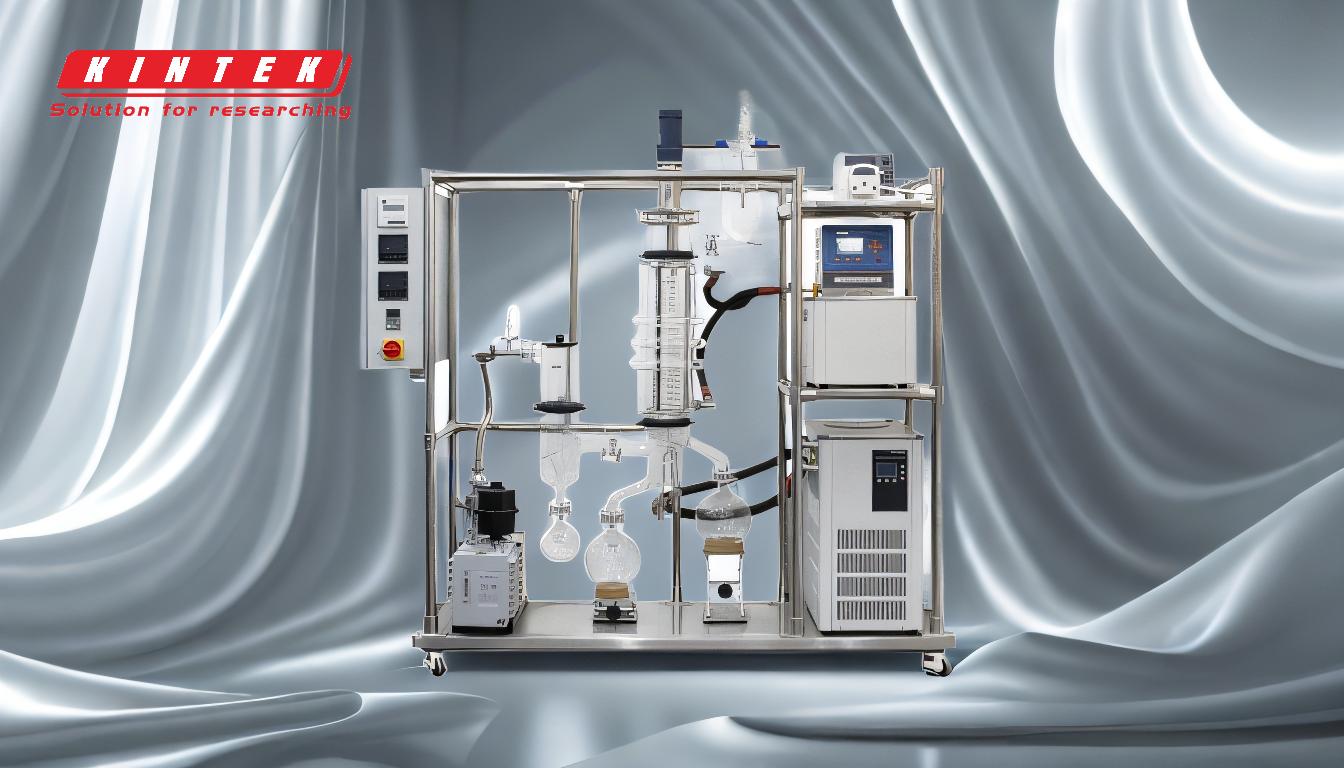Reactor distillation is a specialized process used in chemical engineering to separate components of a liquid mixture based on their boiling points. It involves heating the mixture in a reactor to vaporize the more volatile components, which are then condensed back into a liquid form. This process is crucial for isolating specific compounds, purifying substances, or concentrating desired components. Reactor distillation is widely used in industries such as pharmaceuticals, petrochemicals, and food and beverage production. The process leverages the principles of vaporization and condensation to achieve efficient separation, making it a cornerstone of many industrial applications.
Key Points Explained:

-
Definition of Reactor Distillation:
- Reactor distillation is a separation process that takes place within a reactor, a vessel designed to contain chemical reactions. The process involves heating a liquid mixture to vaporize its more volatile components, which are then condensed and collected separately.
- This method is particularly useful for separating mixtures where the components have significantly different boiling points.
-
Key Principles Behind Distillation:
- Vaporization and Condensation: The core principle of distillation is the conversion of a liquid into vapor (vaporization) and then back into a liquid (condensation). This allows for the separation of components based on their volatility.
- Separation of Components: Distillation is effective in separating sugars, acids, colors, and bitter compounds from aromas, alcohols, water, and small flavor molecules. This is because these components have different boiling points and volatilities.
-
Applications of Reactor Distillation:
- Pharmaceutical Industry: Used to purify chemical compounds and isolate active pharmaceutical ingredients (APIs).
- Petrochemical Industry: Essential for refining crude oil into various fractions like gasoline, diesel, and kerosene.
- Food and Beverage Industry: Employed in the production of alcoholic beverages, essential oils, and flavor extracts.
-
Process Steps in Reactor Distillation:
- Heating: The liquid mixture is heated in the reactor to a temperature where the more volatile components start to vaporize.
- Vaporization: The volatile components turn into vapor and rise within the reactor.
- Condensation: The vapor is then cooled in a condenser, turning it back into a liquid.
- Collection: The condensed liquid, now separated from the original mixture, is collected in a separate container.
-
Advantages of Reactor Distillation:
- High Purity: Reactor distillation can achieve high levels of purity for the separated components.
- Scalability: The process can be scaled up for industrial production or down for laboratory-scale experiments.
- Versatility: It can be applied to a wide range of mixtures and industries.
-
Challenges and Considerations:
- Energy Consumption: Reactor distillation can be energy-intensive, especially for mixtures with components that have close boiling points.
- Equipment Cost: The reactors and associated equipment (e.g., condensers, heat exchangers) can be expensive.
- Safety: Handling volatile and potentially hazardous chemicals requires strict safety protocols.
-
Comparison with Other Separation Techniques:
- Distillation vs. Filtration: While filtration separates solids from liquids, distillation separates liquids based on their boiling points.
- Distillation vs. Extraction: Extraction involves transferring a component from one phase to another (e.g., liquid-liquid extraction), whereas distillation relies on phase changes (liquid to vapor and back).
-
Future Trends in Reactor Distillation:
- Energy Efficiency: Research is ongoing to develop more energy-efficient distillation processes, such as using heat integration and advanced materials.
- Automation: Increasing automation and control systems are being integrated into distillation processes to improve precision and reduce human error.
- Sustainability: There is a growing focus on making distillation processes more sustainable by reducing waste and energy consumption.
In summary, reactor distillation is a fundamental process in chemical engineering that leverages the principles of vaporization and condensation to separate and purify components of a liquid mixture. Its applications span various industries, and while it offers numerous advantages, it also presents challenges that are being addressed through ongoing research and technological advancements.
Summary Table:
| Aspect | Details |
|---|---|
| Definition | Separation process in a reactor using vaporization and condensation. |
| Key Principles | Vaporization, condensation, and component separation by boiling points. |
| Applications | Pharmaceuticals, petrochemicals, food & beverage production. |
| Process Steps | Heating → Vaporization → Condensation → Collection. |
| Advantages | High purity, scalability, and versatility. |
| Challenges | High energy consumption, equipment cost, and safety concerns. |
| Future Trends | Energy efficiency, automation, and sustainability improvements. |
Discover how reactor distillation can optimize your processes—contact our experts today!












